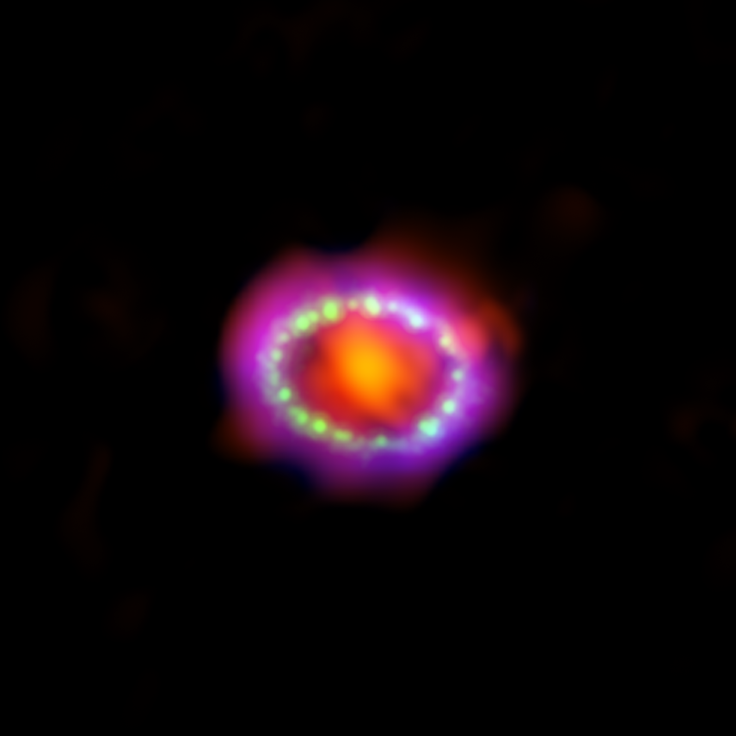33-Year-Old Mystery Solved? Astronomers Spot Signs Of Elusive Neutron Star In Supernova 1987A

KEY POINTS
- Supernova 1987A was first spotted 33 years ago but its neutron star remains elusive
- Researchers recently suggested that the neutron star may be hiding in a 'hot blob' of dust
- The authors of a new study found evidence to support the earlier suggestion
Astronomers may have finally found evidence regarding the whereabouts of the elusive neutron star of Supernova 1987A after 33 years. It's possible that the star may be hiding in a "blob" in the remains of the supernova.
It was on Feb. 23, 1987 when astronomers detected a new source of light in the Large Magellanic Cloud and they found that the light source was actually from a spectacular supernova that blazed with the power of 100 million suns for several months.
Dubbed as SN 1987A, the supernova was one of the brightest exploding stars in over 400 years, fascinating many astronomers for over 30 years. But the mystery of where the neutron star that should have resulted from the explosion remained unsolved.
Recently, a team of astronomers reported spotting a hot "blob" in SN 1987A that was brighter than its surroundings. This blob of dust was detected using the Atacama Large Millimeter/submillimeter Array (ALMA). The team suggested that it could be where the elusive neutron star might be hiding because it was so bright that something is likely heating it up and causing it to shine bright.
A follow-up theoretical study by another team of astronomers supports this hypothesis. Based on the computer models, the new study, published in The Astrophysical Journal, says the supernova explosion likely "kicked" the neutron star away from the place where it was actually born.
In fact, the place where astronomers believe the neutron star should be today is exactly where the blob is. Further, they predict the neutron star to be about 5 million degrees Celsius, which would explain why the blob is so bright.
"We thought that the neutron star might be too bright to exist, but then Dany Page and his team published a study that indicated that the neutron star can indeed be this bright because it is so very young," a member of the team that initially spotted SN 1987A with ALMA, Mikako Katsuura of Cardiff University, said in a news release from the National Radio Astronomy Observatory (NRAO).
At just 33 years old, the neutron star would be the youngest neutron star to be found, the second youngest being the 330-year-old neutron star in Cassiopeia A.
The researchers of the new study say the neutron star is behaving "exactly" as they predicted and it is likely neither a pulsar nor a black hole, which some astronomers suspected the supernova to have collapsed into when they could not find signs of the neutron star.
"In spite of the supreme complexity of a supernova explosion and the extreme conditions reigning in the interior of a neutron star, the detection of a warm blob of dust is a confirmation of several predictions," astrophysicist and co-author of the new study, Dany Page of the National Autonomous University of Mexico, said in the NRAO news release.
Only a direct image of the neutron star would certainly prove that it is, indeed, what they are looking for. But it may take decades before the cloud of dust clears out enough to make the hiding neutron star visible.

© Copyright IBTimes 2025. All rights reserved.






















